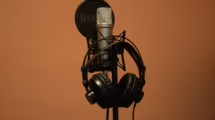Gheg Dialect 101: Essential Signs Every Learner Should Know
The Gheg dialect, primarily spoken in northern Albania and parts of Kosovo, is one of the two main dialects of the Albanian language, the other being Tosk. Understanding the Gheg dialect is essential for anyone interested in Albanian culture and language. This article aims to provide a comprehensive guide to the essential signs and expressions every learner should know when delving into the world of Gheg.
What is Gheg?
Before we explore the essential signs, it’s crucial to understand what the Gheg dialect entails. Gheg is termed a “subdialect”, defined as variations of the Albanian language spoken by the Gheg people. It boasts unique phonological, grammatical, and vocabulary characteristics compared to its Tosk counterpart. While Tosk is the basis of standard Albanian used in education and media, Gheg holds significant cultural value and identity among its speakers.
Historical Context
Historically, Gheg and Tosk have been shaped by various socio-political influences. Gheg has been influenced by Slavic languages due to historical interactions with Slavic populations in the Balkans. In contrast, Tosk has incorporated more Greek and Italian influences. The differentiation dates back centuries, and these linguistic dissimilarities reflect the rich tapestry of Albanian history.
Key Features of the Gheg Dialect
Understanding the phonetics, vocabulary, and grammatical structures of Gheg is essential before diving into essential signs.
Phonetics
Gheg is known for its distinctive sounds, which can be intimidating to new learners. For example, the pronunciation of certain vowels and consonants may vary significantly from standard Albanian. A few noteworthy phonetic traits include:
- Vowel Reduction: Gheg tends to reduce vowels in unstressed syllables more than Tosk.
- Consonant Clusters: Gheg often employs clusters that might be simplified in Tosk.
- Intonation: The intonation patterns can differ drastically, which can alter the meaning of words.
Vocabulary
Many words in Gheg differ from their Tosk counterparts. For example, the Gheg word for “rain” is “shi,” and in Tosk, it is often “shiu.” Familiarity with Gheg vocabulary will significantly enhance a learner’s ability to communicate effectively.
Grammar
While the basic grammar remains consistent across the dialects, Gheg tends to use simpler verb conjugations and can be less formal than Tosk.
Essential Signs in Gheg Dialect
1. Greetings
Greetings are the fundamental building blocks of communication. Here are some essential Gheg greetings:
- “Tung!” (Hello!)
- “Si je?” (How are you?)
- “Mirë!” (Good!)
Context: Familiarizing yourself with these simple greetings will make interactions more friendly and welcoming.
2. Directions
Navigating is crucial when traveling or living in an area where Gheg is spoken. Here are some signs related to directions:
- “Majtas” (Left)
- “Djathtas” (Right)
- “Më në fund” (At the end)
Example Sentence: “Shko majtas, pastaj djathtas.” (Go left, then right.)
3. Basic Questions
Mastering the art of asking questions is vital in any language, and Gheg is no exception. Here are some simple question words:
- “Cila?” (Which?)
- “Kush?” (Who?)
- “Çfarë?” (What?)
Example Sentence: “Kush është ai?” (Who is he?)
4. Common Phrases
Common phrases are often used in everyday interactions. Here are a few you should know:
- “Faleminderit.” (Thank you.)
- “Nuk kuptoj.” (I don’t understand.)
- “Jam i/e lumtur.” (I am happy.)
These phrases will help you establish rapport and show courtesy.
5. Numbers
Numbers are another essential part of the language that allows speakers to express quantities, prices, and more. Here are the numbers one through ten in Gheg:
- “Një”
- “Dy”
- “Treo”
- “Katre”
- “Pesë”
- “Gjashtë”
- “Shtatë”
- “Tetë”
- “Nëntë”
- “Dhjetë”
Usage: Being able to count and understand numbers is crucial for shopping, ordering food, and other daily activities.
6. Emotions and Expressions
Expressing feelings is significant in establishing personal connections. Here are a few emotional expressions in Gheg:
- “Jam i/e zemëruar.” (I am angry.)
- “Jam i/e trishtuar.” (I am sad.)
- “Jam i/e frikësuar.” (I am scared.)
Cultural Nuances
In addition to the linguistic aspects, understanding the cultural nuances is crucial. Gheg speakers often use humor, proverbs, and idioms that may not translate well into English. A popular Gheg saying is:
- “Shiko përpara, kurrë mbrapa!” (Look forward, never backward!)
This saying reflects the optimistic and forward-thinking attitude often found in Gheg culture.
Resources for Learning Gheg
If you’re eager to delve deeper into the Gheg dialect, here are some resources that can facilitate your learning journey:
- Language Learning Apps: Apps like Duolingo and Memrise occasionally offer sections on lesser-known dialects.
- Online Forums: Engaging in online communities focused on the Albanian language can provide insights and tips.
- Books: Look for books dedicated to Albanian dialects, including Gheg. They often contain exercises, vocabulary lists, and cultural notes.
Conclusion
Learning the Gheg dialect might present its challenges, but it will substantially enrich your understanding of Albanian culture. The essential signs and expressions highlighted in this article serve as a foundation for your linguistic journey. Dive into the language with curiosity and an open mind, and you will discover a world full of historical depth and vibrant culture.
Modern learners in an increasingly interconnected world will find that mastering regional dialects like Gheg adds a unique layer to their linguistic skill set. So whether you’re planning to travel, connect with family roots, or simply enjoy studying languages, the Gheg dialect is a rewarding path to explore.
By employing these essential signs and expressions, you will no longer be a stranger in Gheg-speaking communities but rather a welcomed participant in the beautiful tapestry of Albanian life.
[Source: Various linguistic studies, Albanian language resources, and cultural texts]


























Add Comment